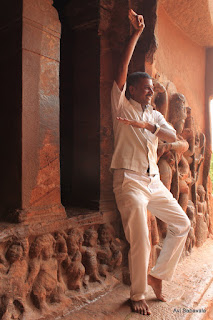The temples of North Karnataka have a unique place in the annals of Indian history and represent some of the finest intricate architecture in peninsular India. So here I am having signed up with Doe's Ecotours and the enthusiastic and knowledgeable Doreen to go back in time and to the history books. it is no coincidence that I am also going to review the book "India: A History" by John Keay that covers the 4000 year old history of the Indian sub-continent. So out come my Hampi guide books published by the Archeological Survey of India (ASI).. ASI has been publishing these guides for all the UNESCO World heritage Sites in India. These very well brought out handy booklets are a must have and must read as preparatory work before visiting monuments that are replete with history - and they make a good and attractive addition to the library too!
So here we are meeting at Sholapur where my friend Sanjeevani and I are staying for two days visiting the Nanaj Bustard Sanctuary and a few monuments around Sholapur before our enthusiastic group joins us on Day 1
As always on such trips, the excitement and enthusiasm is always palpable. Catching up with old friends and introducing ourselves to new friends and after breakfast, get into our vehicles for the long drive to Bijapur - our first destination.
The tour covers the following
- Bijapur - page 1
- Badami, Bhootnath, Banashankari and Mahakuteshwar - page 1
- Pattadakal, Aihole Page 2
- Hampi with a visit to Daroji bear Sanctuary thrown in - Page 2
- Lakkundi page 3






























































